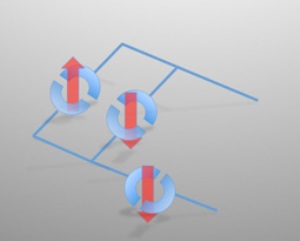The scientists at the London Centre for Nanotechnology and the Physics Department of Sapienza University of Rome have invented a method to draw superconducting shapes utilizing an X-ray beam.
This novel capability to produce and harness small superconducting structures finds applications in future-generation electronic devices. The researchers have demonstrated that they can control high temperature superconductivity regions of a specific material made up of copper, oxygen and lanthanum, a heavy rare earth material.
 Superconductor circuits
Superconductor circuits
When the material is illuminated with X-rays, its oxygen atoms experience a minute scale re-arrangement, which in turn causes the material to show high temperature superconductivity. The X-ray beam is then utilized as a pen to draw superconducting shapes in two dimensions. The scientists were able to rub out these structures using heat treatments. They now have the instruments to draw and erase with excellent accuracy, in few simple stages and without the chemicals normally utilized in tool fabrication.
The novel method’s capability to modify the original structure of a material finds applications in similar materials featuring oxygen and metal atoms, including fuel cells and catalysts.
Professor Aeppli, the UCL investigator of the project and Director of the London Centre for Nanotechnology, stated that the single-step, chemical-free method to produce superconductors paves way to novel applications for electronic devices, especially in re-writing superconducting logic circuits. Sapienza University of Rome’s Professor Bianconi, who leads the research team, stated that it is remarkable that in a few simple processes, the team can now incorporate superconducting characteristic straightaway to material containing oxygen and copper atoms.